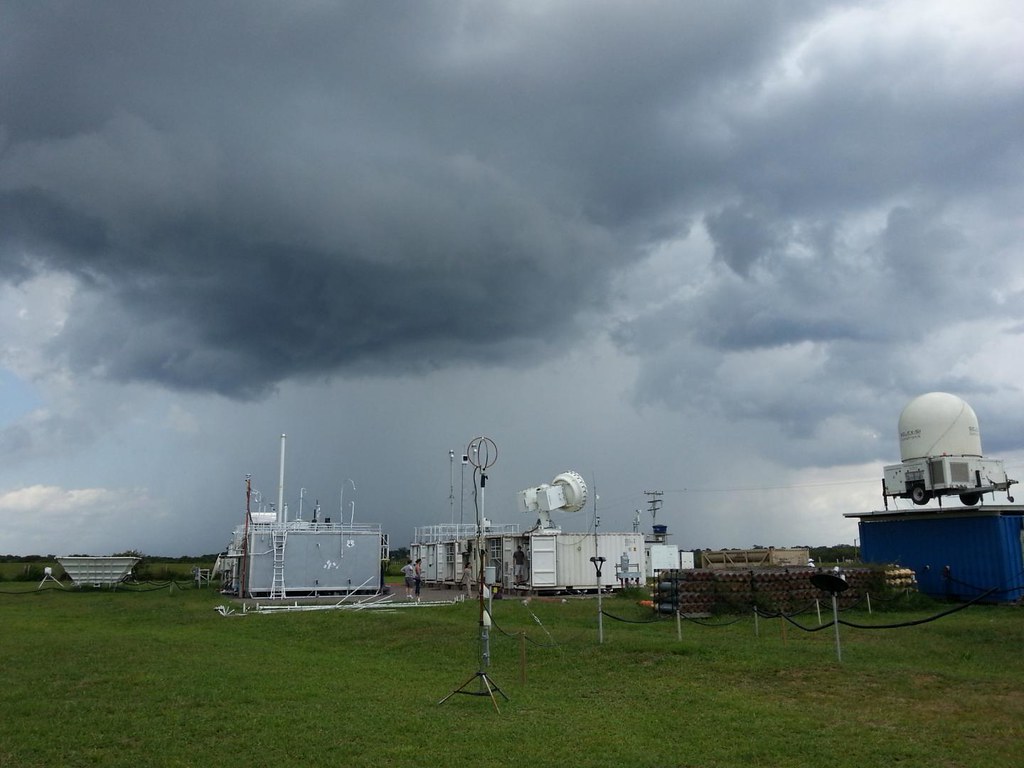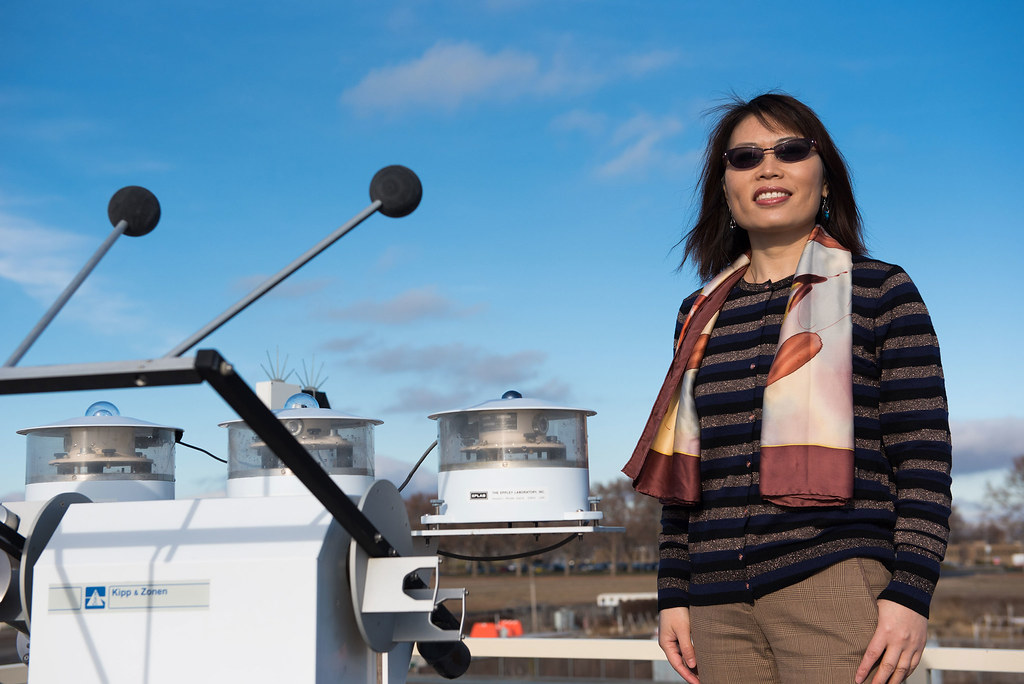一篇刊登在《科學》期刊上的新研究發現,空氣中的微小粒子會導致強大的風暴形成,對天氣的影響力超乎過去所知。只要小於人類頭髮寬度千分之一的粒子,就可能導致風暴加劇、雲量和降雨增加。
這篇研究聚焦於「氣膠」(大氣氣膠,或稱懸浮微粒,Aerosols)的能力。氣膠是空氣中的微小粒子,可能來自城市、工業空氣污染或自然產生如野火。
過去雖然已經掌握到,氣膠可能影響天氣和氣候,但這次科學家選在未受工業污染的巴西亞馬遜熱帶雨林進行實驗,精確辨識出懸浮微粒造成的效應,發現這些細小顆粒的威力不容小覷。

「我們證實這些粒子是造成部分風暴如此強烈並產生大量雨水的原因之一。在溫暖潮濕,且一般來說天氣多爲晴朗的地區,空氣中的細小顆粒可能會產生相當大的影響。」硏究主要作者、美國能源部西北太平洋國家實驗室學者范季文(Jiwen Fan,暫譯)說。
該研究以Green Ocean Amazon計畫蒐集來的獨特資料爲基礎。在這個計畫中,科學家於2014-2015年期間進行了氣候相關的地面和空中測量。

研究所利用的資料來自亞馬遜地區,因為這裡除了馬瑙斯(Manaus)周邊地區外,幾乎未受污染。馬瑙斯是亞馬遜最大的城市,人口超過200萬。
亞馬遜熱帶雨林為氣膠研究提供了獨特的天然實驗室。在這裡科學家難得可以在工業化前的環境中觀察污染對大氣過程的影響,並精確辨識出除了溫度和濕度等其他因素外,懸浮微粒造成的效應。
科學家研究了風暴發展過程中,50奈米以下超細顆粒的作用。
科學家過去已經了解,較大的懸浮顆粒會促使强大上升氣流形成雲,進而形成水滴,最終降雨。但過去一直不曾觀察到的是小於50奈米的顆粒(如車輛和工業過程產生的顆粒)是否具有相同的效果。
這項研究結果顯示,超細微粒刺激雲層的威力比稍大的顆粒更强。
藉由精細的電腦模擬,科學家展示了超細微粒如何影響暴風雨雲的產生——溫暖潮濕的環境中沒有較大顆粒的存在,超細微粒就有機會形成雲滴(cloud droplets);而在相對濕度超過100%的溫暖潮濕高空環境中,低濃度的大顆粒會導致大量多餘的水蒸氣,也會使超細顆粒轉變成雲滴。
這些超細顆粒尺寸雖小但數量龐大,因此可以形成許多小水滴,讓過量的水蒸氣在其上凝結。
如此的凝結過程將釋放更多的熱量,使得上升氣流更加強大。更多的暖空氣被拉入雲中,將更多的水滴拉到高空,產生更多的冰珠、霰、閃電和雨水。
這樣的結果,范季文稱之為「強化對流」(invigorated convection),意味著產生更強的風暴。
「我們證實在晴朗潮濕的條件下,像是海面上和部分熱帶地區,微小的氣膠對天氣和氣候有很大的影響,並且會加劇風暴威力。」范季文說,「更廣泛而言,這樣的結果顯示,從前工業時代至今,人類活動可能劇烈地改變了這些地區的暴風雨特性。」
Tiny particles fuel powerful storms and influence weather much more than has been previously understood, finds a new study published in the journal “Science.”
The research focuses on the power of minute airborne particles known as aerosols, which can come from urban and industrial air pollution as well as wildfires.
Scientists have known that aerosols may play an important role in shaping weather and climate, but the new study shows that the smallest of particles have an outsize effect.
Particles smaller than 1,000th the width of a human hair can cause storms to intensify, clouds to grow and more rain to fall, the researchers have learned.
“We showed that the presence of these particles is one reason why some storms become so strong and produce so much rain. In a warm and humid area where atmospheric conditions are otherwise very clean, the intrusion of very small particles can make quite an impact,” said lead author Jiwen Fan of the U.S. Department of Energy’s Pacific Northwest National Laboratory in Richland.
The findings are based on unique data made possible by the GoAmazon research campaign, where scientists made ground-based and airborne measurements related to climate during 2014-2015.
The study capitalized on data from an area of the Amazon that is pristine except for the region around Manaus. With a population of more than two million people it is the largest city in the Amazon.
The Amazon rainforest provided a unique natural lab to study effects of aerosols. The setting gave scientists the rare opportunity to look at the impact of pollution on atmospheric processes in a pre-industrial environment and pinpoint the effects of the particles apart from other factors such as temperature and humidity.
The scientists studied the role of ultrafine particles less than 50 nanometers wide in the development of thunderstorms.
Similar but larger particles are known to play a role in feeding powerful, fast-moving updrafts of air from the land surface to the atmosphere, creating the clouds that play a central role in the formation of water droplets that fall as rain.
But scientists had not observed until now that particles smaller than 50 nanometers, such as the particles produced by vehicles and industrial processes, could have the same effects.
The new study revealed that these small particles can invigorate clouds in a much more powerful way than their larger counterparts.
Through detailed computer simulations, the scientists showed how the smaller particles have a powerful impact on storm clouds.
When larger particles are not present high in a warm and humid environment, it opens opportunities for the smaller particles to form cloud droplets.
A low concentration of large particles high in a warm and humid environment with relative humidity beyond 100 percent, contributes to high levels of excessive water vapor, allowing ultrafine particles to transform into cloud droplets.
While the particles are small in size, they are large in number, and they can form many small droplets on which the excess water vapor condenses.
That condensation releases more heat, which makes the updrafts much more powerful. More warm air is pulled into the clouds, pulling more droplets aloft and producing more ice and snow pellets, lightning, and rain.
The result is what Fan calls “invigorated convection,” producing stronger storms.
“We’ve shown that under clean and humid conditions, like those that exist over the ocean and some land in the tropics, tiny aerosols have a big impact on weather and climate and can intensify storms a great deal,” said Fan, an expert on the effects of pollution on storms and weather.
“More broadly, the results suggest that from pre-industrial to the present day, human activity possibly may have changed storms in these regions in powerful ways,” he said.
※ 全文及圖片詳見:ENS






